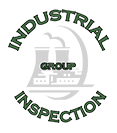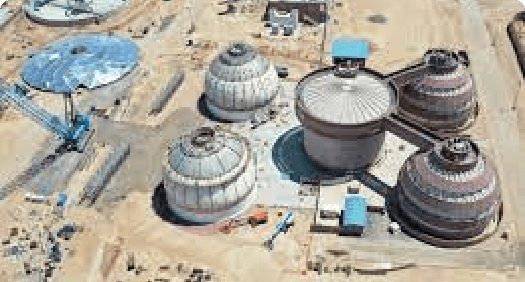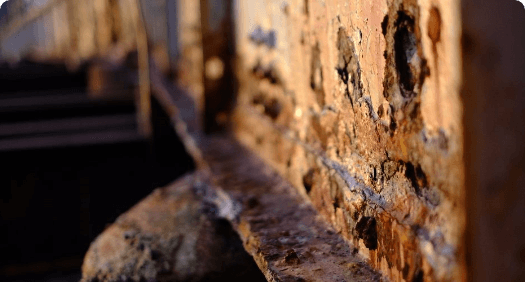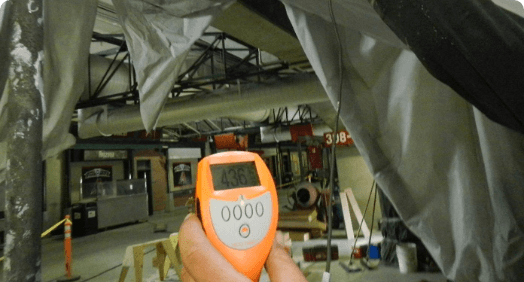
Industrial coatings ensure protection against chemical, mechanical, and environmental degradation. However, plant managers often forget the importance of industrial coatings until an asset begins corroding, breaking down, or worse – becomes unsalvageable and in need of immediate replacement.
Essentially, industrial coatings are specialized paints that protect various substrates, including steel or concrete. To minimize the risk of corrosion, companies must hire independent coating inspectors to maintain the integrity of the existing industrial coatings throughout their current lifecycle. The annual cost of corrosion is more than $2.5 trillion, which is the equivalent of 2013’s 3.4 percent global GDP. By employing corrosion control practices, the world could save up to $875 billion yearly.
What Are the Different Types of Industrial Coatings?
High-performing industrial coatings allow structures to last longer and look better. Moreover, by coating your manufacturing products, you are contributing to the reduction of annual corrosion costs. Here, Industrial Inspection Group has provided an overview of the common types of industrial coatings and how each one benefits you.
1. Polyurethane Coatings
These coatings have an abrasion-resistant, high-gloss finish. Because of these attributes, industrial painters typically use polyurethane coatings as a topcoat for surfaces to remain smooth and scratch-free. They also serve as a layer of protection for other coatings, such as epoxy intermediate coats and zinc-rich primers on nuclear plants, ships, and surfaces in harsh environments.
The two types of polyurethane coatings are aliphatic and aromatic:
- Aliphatic polyurethanes can withstand ultraviolet (UV) rays and retain their color following prolonged exposure to sunlight. As such, aliphatic polyurethane coatings are ideal for outdoor applications.
- Aromatic polyurethane coatings perform best on equipment situated mostly underwater, as they tend to weaken and develop a white film when exposed to sunlight and air.
The downside, however, is that polyurethane coatings contain harmful chemicals. Isocyanates, toluene, phosgene, diamines, ozone-depleting gasses, and halogenated flame retardants are some of the common chemicals used when formulating polyurethane coatings or byproducts of polyurethane production. As a general precaution, contractors must wear protective gear when applying these coatings.
2. Epoxy Coatings
These coatings contain an amine-curing agent combined with an epoxy polymer. Think of the double tubes of epoxy glue used to secure a strong adhesive bond between one material and another. Formulators can adjust the mix ratios and ingredients of epoxies to produce a variety of attributes that meet specific project demands.
Epoxy coatings adhere well to many different surfaces and can withstand harsh conditions and abrasion. Compared to other coating materials, properly formulated epoxies are highly effective against high temperatures, being able to resist heat levels up to 1,400 degrees Fahrenheit.
Contractors apply epoxy coatings in two- or three-part systems. As a base, applying epoxy over a zinc primer is ideal for maximum corrosion protection. In a three-part system inclusive of a zinc base, an epoxy binder, and a topcoat, specialists in Coating Specification Development and Review may recommend a polyurethane topcoat for enhanced aesthetics and superior performance.
Conversely, epoxies perform poorly when exposed to sunlight. Similar to aromatic polyurethane, they are more suitable for submerged surfaces or components that do not receive direct sun exposure. Interior steel tanks of nuclear power plants or submerged pipes at water treatment facilities are some examples of structures that benefit from epoxy coatings.
3. Alkyd Coatings
“Alkyd” is a term from the words “alcohol” and “acid.” It describes the resin’s origin from which the coating procures its film-forming capabilities. While not as durable as polyurethanes and epoxies, alkyds are strong and damage-resistant, especially against moisture. Contractors apply alkyd coatings on interior and exterior assets, including underground and underwater structures.
Developers can adjust the components to create a custom alkyd coating that adapts to a variety of conditions. Alkyd takes longer to dry than other coatings since it needs to be permeable to oxygen. Contractors may apply heat to speed the chemical curing reaction.
4. Zinc-Rich Coatings
As the name suggests, a zinc-rich coating received its classification due to the zinc dust content in its formulation. Zinc-rich coatings have two types:
- Organic zinc-rich coatings use polyurethane or epoxy binders
- Inorganic zinc-rich coatings use silicate binders
Zinc coatings are particularly effective on steel surfaces. When exposed to the environment, the zinc particles “sacrifice” themselves by corroding before the steel surface does. As the zinc dust breaks down, it creates a protective barrier that enables the steel to resist environmental elements.
While both organic and inorganic coatings are durable, they are vulnerable to acids and alkaline substances. As such, industrial coaters often use them as primers in two- or three-coat systems before applying a more resilient coating as a final topcoat. Zinc-rich coatings are mostly used on surfaces in environments subjected to significant levels of corrosion, such as bridges.
5. Acrylic Coatings
Acrylic coatings have several advantages, including quick-drying capability, a high-gloss finish, and long-lasting color-retaining properties. They make excellent adhesion-promoting primers. Acrylic coatings require fewer ingredients and can considerably improve a surface’s corrosion resistance. Contractors usually apply these industrial coatings to metal, asphalt, single-ply, and foam roofing substrates.
6. Ceramic Coatings
In addition to improved durability and corrosion prevention, ceramic coatings have unique characteristics, such as superior thermal insulation and both chemical and dimensional stability. In industrial coatings projects, ceramic polymer coatings can protect tanks and piping systems against UV radiation, moisture, chemicals, and high temperatures. However, ceramic coatings should never be used on surfaces exposed to tensile or compressive stress.
7. Intumescent Coatings
Intumescent coatings can expand up to 100 times their original thickness and transform into foam-like layers that insulate structures when exposed to extreme heat or open flames. These coatings are able to maintain the integrity of different components in case of a fire, making them some of the best options for high-heat applications.
Determine the Best Industrial Coatings for Your Project
Industrial Inspection Group specializes in the development, review, and application of coatings for various industrial sectors, including but not limited to companies that make or sell machinery, equipment, or supplies used in manufacturing and construction. Having provided inspections, consultancy, and project management services in the United States and outlying territories for over a decade, our team only recommends the most suitable type of coating and application techniques for each unique project. To know more about how our industrial coating services can help you, contact us at 480-637-5238.

















